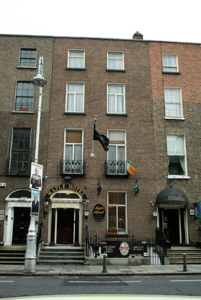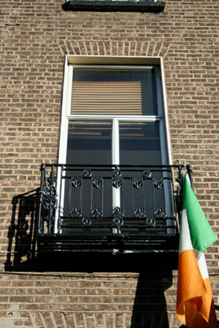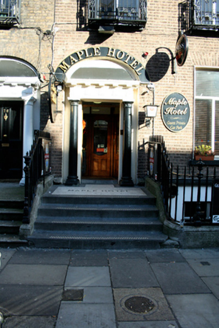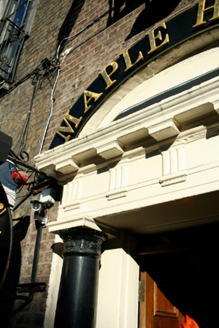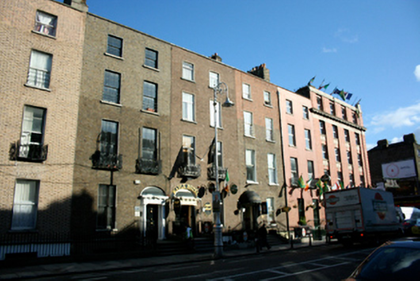Survey Data
Reg No
50010170
Rating
Regional
Categories of Special Interest
Architectural, Artistic
Original Use
House
In Use As
Hotel
Date
1810 - 1830
Coordinates
316288, 234829
Date Recorded
01/11/2011
Date Updated
--/--/--
Description
Terraced two-bay four-storey house over raised basement, built c.1820, currently in use as hotel. M-profile pitched slate roof, hipped to north, concealed behind parapet wall with squared granite coping. Stepped yellow brick chimneystack with clay pots to boundary with No. 74. Red brick walls laid in Flemish bond to moulded granite plinth course over rendered walls to basement. Diminishing square-headed window openings with gauged brick voussoirs, patent rendered reveals, granite sills and replacement aluminium windows throughout. Decorative wrought-iron balconettes to first floor. Round-headed door opening with gauged brick voussoirs, recent uPVC name plaque and painted stone doorcase comprising Roman Doric columns, with floral and egg and dart capital detail, on stone bases surmounted by Doric frieze displaying alternating triglyphs and metopes, projecting masonry cornice and single-pane fanlight. Replacement timber panelled door opening onto terrazzo-clad granite platform bridging basement with terrazzo-clad granite steps. Approach flanked by spearheaded wrought-iron railings on moulded granite plinths returning to enclose basement area, with decorative posts displaying urn finials. Square-headed door opening to basement with replacement timber door, louvred sidelight and iron grille. Replacement gate and concrete steps grant access to basement area from street. Limited access to rear of property which is heavily developed. Original stone mews structure with brick archway, addresses Mabbot Lane, with altered façade and roof.
Appraisal
Dating from the early nineteenth century, this well-appointed house forms an integral component of Lower Gardiner Street, a significant streetscape of the north Georgian city. Despite some alterations to the façade and entrance area, the building has retained much of its historic form and character with numerous historic features including a fine doorcase and enclosing railings surviving intact. The rhythm of the terrace is marked by the paired doorcases repeating the length of the block. The Roman Doric doorcase is a somewhat unusual feature in Dublin, and matches those of Nos.75 to 80, suggesting that these houses were developed as a group. The survival of an associated mews building is also significant despite it undergoing considerable alteration. Lower Gardiner Street was developed by Gardiner in the late eighteenth century, with leases dating from the 1790s. Lower Gardiner Street formed part of Gardiner’s route from Beresford Place to Mountjoy Square, and No.75 forms part of a surviving terrace along this street.

